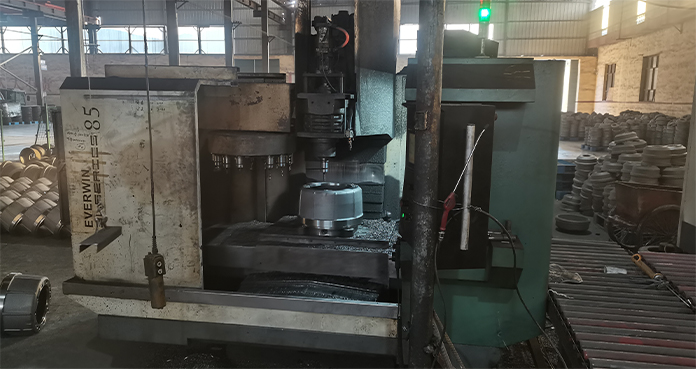Nov . 25, 2024 03:00 Back to list
Comparing Brake Drums and Rotors for Optimal Vehicle Performance and Safety
Brake Drum vs. Rotor Understanding the Key Differences
When it comes to automotive braking systems, two fundamental components play a crucial role brake drums and rotors. Both are essential for slowing down or stopping vehicles, but they work differently, have distinct characteristics, and influence the vehicle's performance in unique ways. In this article, we will explore the differences between brake drums and rotors, as well as their advantages and disadvantages.
Basic Functionality
At the core of their functionality, both brake drums and rotors serve as components of the braking system that create friction to slow down or stop the vehicle. Brake drums are part of a drum brake system, which primarily uses friction generated by brake shoes pressing against the inside of a drum to create stopping power. Conversely, rotors are a part of disc brake systems, where brake pads clamp onto a rotating disc (the rotor) to provide stopping force.
Design and Construction
Brake drums are typically made from cast iron or aluminum and have a cylindrical shape. The interior is smooth, allowing the brake shoes to expand against it when the brake pedal is pressed. This expansion occurs due to hydraulic pressure, which leads to increased friction and ultimately slows the vehicle.
Rotors, on the other hand, are usually made from cast iron but can also be found in materials like carbon composite for high-performance vehicles. They have a flat, disc-like shape and are mounted on the wheel hub. Brake pads clamp onto the rotor's surface, which is often slotted or drilled to enhance cooling and improve performance. The design of rotors allows for better heat dissipation compared to brake drums.
Brake Drum vs
. Rotor Understanding the Key DifferencesOne significant difference between brake drums and rotors lies in their performance under intense conditions. Disc brakes (rotors) generally offer more consistent stopping power, especially in wet conditions. This is due to the ability of disc brakes to dissipate heat more effectively and maintain performance even during prolonged braking. The exposed nature of the rotor also prevents water and debris from accumulating, which can be a drawback for drums.
brake drum vs rotor

On the other hand, brake drums can provide superior stopping power in low-speed situations. They tend to perform well under normal driving conditions and can be less expensive to manufacture and maintain. However, they are more prone to brake fade—characterized by a reduction in stopping power due to overheating—which can be a significant issue in repeated braking scenarios.
Maintenance Considerations
When it comes to maintenance, both brake drums and rotors require attention, but they demand different approaches. Brake drums typically require less frequent replacements of their components, as they often wear more evenly. However, if one part of the drum system fails, it is crucial to replace both the shoes and drums to maintain optimal function.
Conversely, rotors tend to wear unevenly, especially if the brake pads are not replaced in a timely manner. This can lead to issues like warping, which necessitates resurfacing or replacing the rotors. Regular inspection of both systems is necessary to ensure safety and long-term performance.
Cost and Applications
Regarding cost, brake drums generally tend to be less expensive than rotors, both in terms of parts and the labor required for replacement. As a result, they are commonly found on smaller, less powerful vehicles or older models.
Rotors, while often pricier, are increasingly prevalent in modern vehicles, particularly those designed for performance or heavy loads. Their ability to handle high temperatures and provide better overall braking performance makes them a popular choice among auto manufacturers.
Conclusion
In summary, both brake drums and rotors have unique benefits and drawbacks that cater to different driving conditions and vehicle types. Understanding the differences between the two can help vehicle owners make informed decisions regarding maintenance, replacements, and enhancements. Whether choosing drums for cost-effectiveness or opting for rotors for performance, the ultimate goal remains the same ensuring safety and reliability on the road.
-
HINO Industrial Solutions - ¡Ң���ຽ��е��������˾ | Advanced Efficiency&Customization
NewsJul.13,2025
-
HINO Industrial Efficiency Solutions - ¡Ң���ຽ��е��������˾
NewsJul.13,2025
-
HINO Industrial Solutions - ¡Ң���ຽ��е��������˾ | Advanced Technology&Reliability
NewsJul.13,2025
-
HINO Industrial Efficiency-Jiangsu Hino Industrial|Productivity Optimization&Cost Reduction
NewsJul.12,2025
-
HINO-¡Ң���ຽ��е��������˾|Advanced Industrial Solutions&Energy Efficiency
NewsJul.12,2025
-
Premium Brake Drum Iveco – Durable Drum Brake Drum & Brake Shoe Solutions
NewsJul.08,2025
